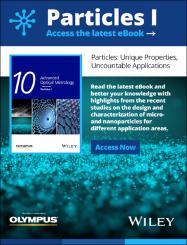| dc.contributor.author | Yılmaz, Cemile | |
| dc.contributor.author | Kanık, Özgür | |
| dc.date.accessioned | 2022-05-12T11:38:13Z | |
| dc.date.available | 2022-05-12T11:38:13Z | |
| dc.date.issued | 16.09.2021 | en_US |
| dc.identifier.citation | Yılmaz, C., & Kanık, Ö. (2022). Investigation of surface roughness values of various restorative materials after brushing with blue covarine containing whitening toothpaste by two different methods: AFM and profilometer. Microscopy Research and Technique, 85(2), 521-532. | en_US |
| dc.identifier.issn | 1059-910X | |
| dc.identifier.issn | 1097-0029 | |
| dc.identifier.uri | https://doi.org/10.1002/jemt.23925 | |
| dc.identifier.uri | https://hdl.handle.net/20.500.12933/989 | |
| dc.description.abstract | The aim of this study is to evaluate the effect of whitening toothpaste on the surface roughness of resin-based restorative materials by different measurement methods. Twenty four specimens from each of human enamel, a microhybrid composite and two nanohybrid composites discs (8.0 diameter × 4.0 mm thick) were divided into two groups (n = 12) according to toothbrushing solutıon and subjected to simulation toothbrushing (30,000 cycles) with both distilled water and whitening toothpaste containing blue covarine. Surface roughness was examined using atomic force microscopy (AFM), profilometer, and scanning electron microscopy (SEM), and the data obtained were subjected to analysis. Ra values of Tescera (TES) were significantly higher than Sonicfill 2 (SF2) when brushing both toothbrushing solutions for initial or 30,000 cycles. Roughness increased for SF2 and TES when brushed for 30,000 cycles and was higher than enamel and Herculite XRV Ultra (HXU). Human enamel was obtained lower surface roughness values brushed with toothpaste compared with distilled water. Evaluation of the surface roughness of control groups using the AFM revealed no statistically significant difference between the groups, but significant differences were found using a profilometer. The use of abrasive whitening toothpaste containing blue covarine and the number of brushing cycles affect the surface properties of human enamel and the restorative material, and also, the clinical success of the restoration. Toothbrushing for 30,000 cycles increased the surface roughness of all materials. The type of toothbrushing solution partially has affected surface roughness. | en_US |
| dc.language.iso | eng | en_US |
| dc.publisher | Wiley-Liss | en_US |
| dc.relation.isversionof | 10.1002/jemt.23925 | en_US |
| dc.rights | info:eu-repo/semantics/embargoedAccess | en_US |
| dc.subject | AFM | en_US |
| dc.subject | Bulkfill | en_US |
| dc.subject | Profilometer | en_US |
| dc.subject | Surface roughness | en_US |
| dc.subject | Whitening toothpaste | en_US |
| dc.title | Investigation of surface roughness values of various restorative materials after brushing with blue covarine containing whitening toothpaste by two different methods: AFM and profilometer | en_US |
| dc.type | article | en_US |
| dc.authorid | 0000-0002-7780-079X | en_US |
| dc.authorid | 0000-0001-9415-8156 | en_US |
| dc.department | AFSÜ, Diş Hekimliği Fakültesi, Klinik Bilimler Bölümü | en_US |
| dc.contributor.institutionauthor | Yılmaz, Cemile | |
| dc.contributor.institutionauthor | Kanık, Özgür | |
| dc.identifier.volume | 85 | en_US |
| dc.identifier.issue | 2 | en_US |
| dc.identifier.startpage | 521 | en_US |
| dc.identifier.endpage | 532 | en_US |
| dc.relation.journal | Microscopy Research and Technique | en_US |
| dc.relation.publicationcategory | Makale - Ulusal Hakemli Dergi - Kurum Öğretim Elemanı | en_US |
















